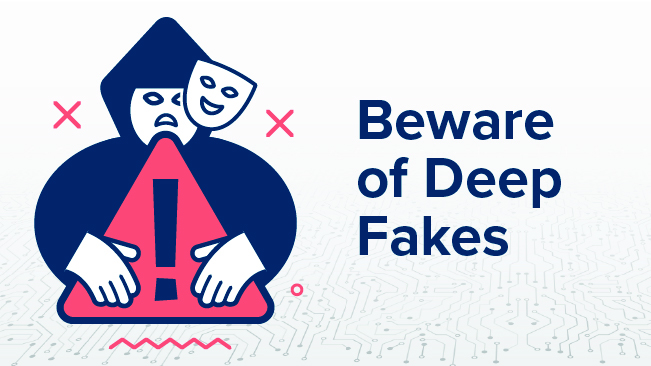
Click Smart – Beware of Deep Fakes
Tip: If a video or image seems shocking or too good to be true, double-check the source.
September 2025
In today’s fast-paced digital world, seeing is no longer believing. A growing threat called "deep fakes" is blurring the line between reality and fabrication.
Deep fakes are highly realistic videos, audio clips, or images created using advanced artificial intelligence technology to mimic someone’s likeness. They can make it appear as though a person said or did something they never actually did, and the technology behind them is getting sharper every day.
Here’s why you should be cautious when it comes to deep fakes:
Misinformation
Deep fakes can spread false narratives quickly, fueling fake news and sowing confusion during important moments, like elections or major world events.
Reputation Damage
A single deep fake has the power to ruin a person’s credibility, destroy careers, or tarnish the reputation of trusted organizations.
Security Risk
Cybercriminals can weaponize deep fakes to scam, impersonate, or deceive, opening the door for fraud and identity theft.
How to Protect Yourself
Verify the Source – Always check where the content came from before believing or sharing it. Official channels and direct sources are the safest.
Cross-Check with Trusted News Outlets – Reputable media and fact-checking organizations can help separate fact from fiction.
Stay Skeptical – If something seems too outrageous, shocking, or flattering to be true, it probably isn’t. Take time to double-check before reacting.
Deep fakes are not just harmless digital tricks, they are a serious threat to truth, trust, and security. By staying alert, thinking critically, and verifying what you see and hear, you can protect yourself and others from falling victim to this modern deception.











